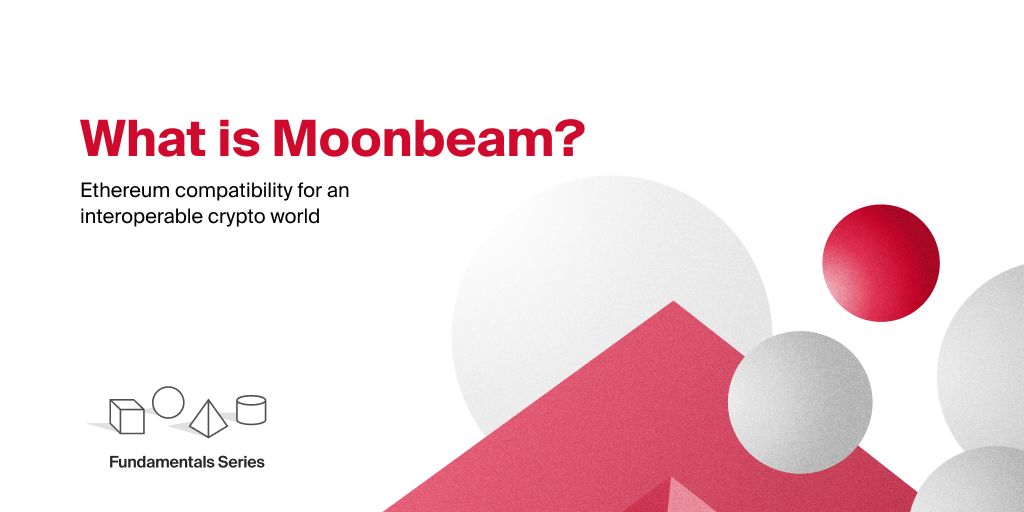Moonbeam is an Ethereum-compatible smart contract platform based on Polkadot. It acts as a developer-focused bridge connecting different blockchain ecosystems, including Ethereum, Cosmos, Solana, Avalanche, and others.
Moonbeam also operates a Kusama-equivalent platform called Moonriver.
An Introduction To Moonbeam
Due to its compatibility with Ethereum Virtual Machine (EVM), Moonbeam can natively execute Ethereum-based smart contracts and decentralized applications. This means developers can deploy existing Solidity smart contracts and decentralized application (dApps) frontends to Moonbeam with almost no changes. Moonbeam is a parachain on the Polkadot network; it benefits from the shared security of the Relay Chain and integrations with other chains connected to Polkadot. Moonbeam’s website describes the platform as follows:
“Moonbeam delivers complete Ethereum compatibility within a Polkadot parachain environment, so developers can continue to use the programming languages and tools they’ve grown used to — but within a fast-growing and scalable Layer 1 chain. It is also compatible with the Substrate and Polkadot ecosystem, including block explorers, wallets, parachains, and more, allowing users the flexibility to choose the right tools and services for the job.”
Moonbeam was created by PureStake, an entity also credited with building developer tools for Algorand. Furthermore, it runs Polkadot validators and gets support from the Moonbeam Foundation. Currently, there are three networks within the Moonbeam family. Moonbeam is the EVM-compatible parachain within the Polkadot ecosystem, while its sister network, Moonriver, was launched as a parachain on Kusama. Both Moonbeam and Moonrover share a testnet called Moonrock.
What Is Moonbeam’s Role In Cross-Chain Applications?
A cross-chain connected dApp can utilize smart contracts to interact and exchange data or assets with other dApps. Cross-chain-connected applications are crucial because they make blockchains more versatile and accessible. They also address challenges like liquidity fragmentation and the complicated user experience of operating in multiple blockchain environments.
Moonbeam is instrumental in the development and operation of cross-chain connected applications on Polkadot. It is also the primary channel for external liquidity and applications coming into the Polkadot ecosystem. Moonbeam’s value proposition rests on three primary factors
-
EVM compatibility
-
Polkadot’s cross-consensus messaging
-
External cross-chain protocols
Creating a cross-chain connected application on Moonbeam allows Ethereum developers access to a familiar development environment that facilitates quicker developments thanks to a significantly reduced learning curve. It also gives them a practical entry point to the larger Polkadot ecosystem. Ethereum dApps can also set up “outposts” on Moonbeam and extend their product and service offerings to Polkadot users while simultaneously leveraging Ethereum’s existing development toolkit.
A Vital Cog In The Polkadot Ecosystem
Moonbeam has established itself as a crucial part of the Polkadot ecosystem by enabling seamless interactions between a plethora of blockchain ecosystems. These include Ethereum, Cosmos, Solana, and Avalanche, to name a few. EVM compatibility facilitates the migration and operation of Ethereum-based dApps on Polkadot, allowing developers to interact with the protocol’s multi-chain environment without making too many adjustments. Since its launch, several projects have partnered with Moonbeam, including Ren, LayerZero, Osmosis, NFTScan, Coinbase Cloud, Gnosis Safe, Ledger, Etherscan, Lido, Balancer, Chainlink, Band Protocol, and several others.
Disclaimer: This article is provided for informational purposes only. It is not offered or intended to be used as legal, tax, investment, financial, or other advice.





